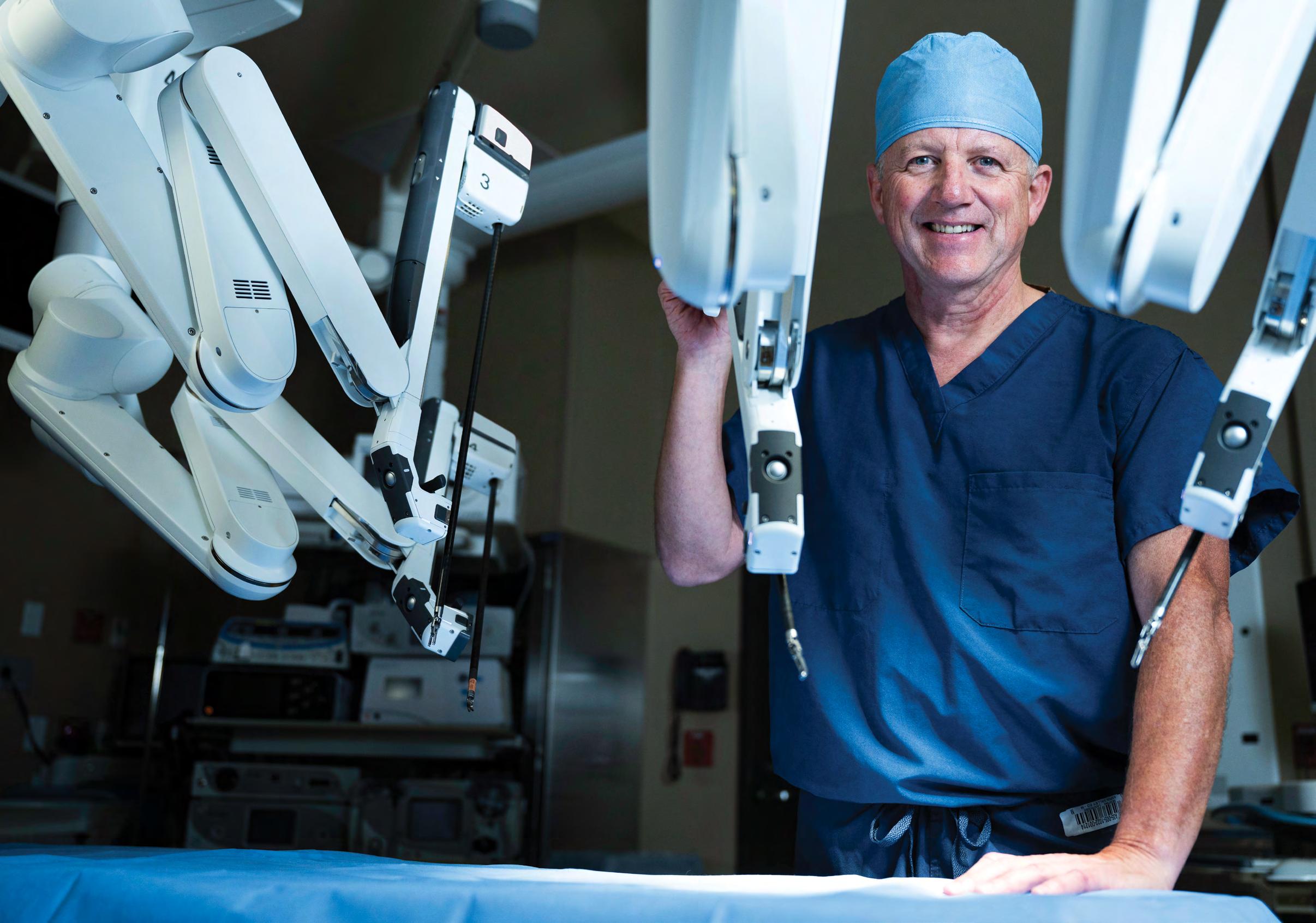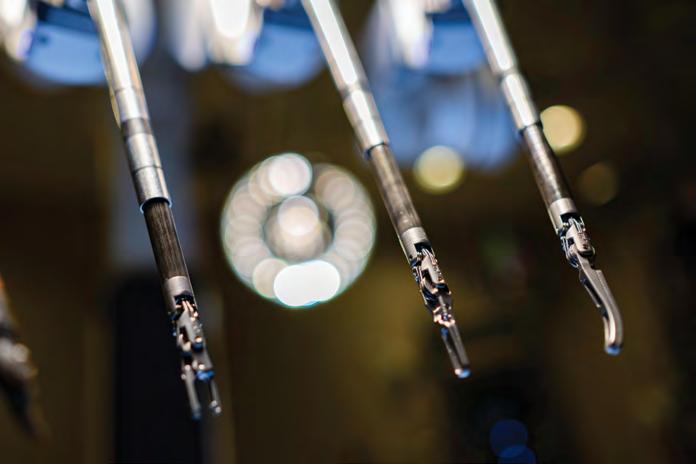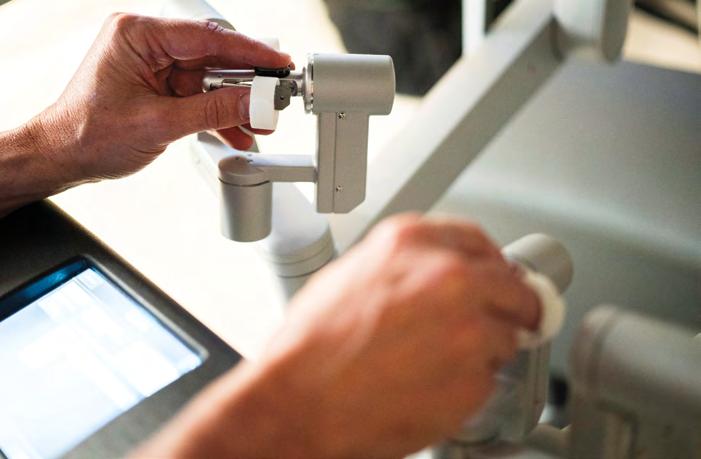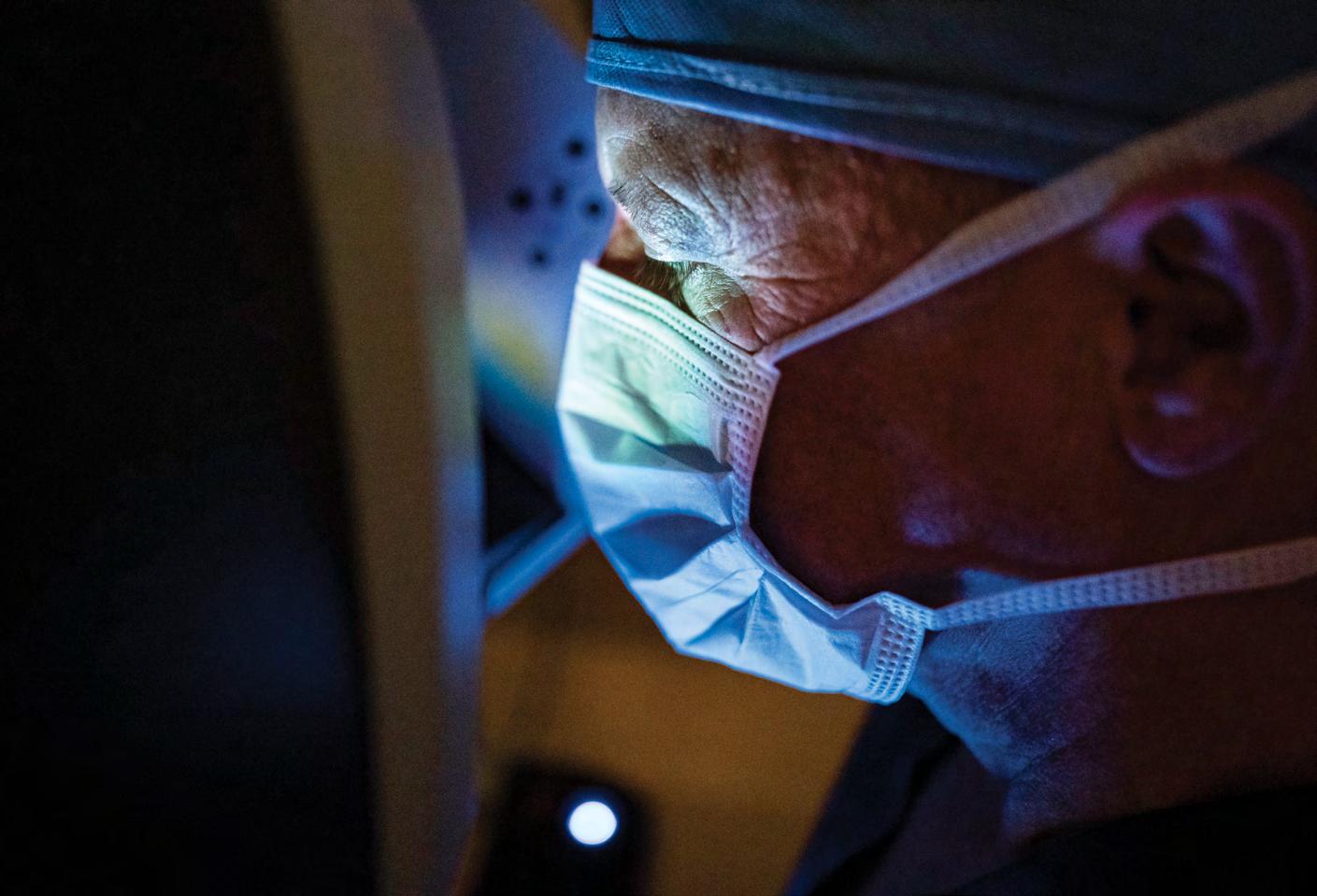
5 minute read
On the Cutting Edge
Meet the New da Vinci Xi Surgical Robot
When the da Vinci Xi® surgical robot made its debut at Aspen Valley Hospital a few months ago, it ushered in a new era of surgical expertise. This state-of-the-art technology enhances surgeons’ skills, enabling far greater accuracy and precision during procedures. This also means achieving better patient outcomes, including reduced pain, fewer complications and faster recovery.
“Adding the da Vinci system is an exciting step forward for Aspen Valley Hospital, because we can now offer patients the best possible surgical experience,” said Dr. Chris Roseberry, FACS, Chief of Medical Staff and Trauma Medical Director at Aspen Valley Hospital. “For 100 years, surgeons performed every operation with the open technique. Today, robotic-assisted surgery with this system is the new gold standard for abdominal and other procedures. It’s a huge leap forward for surgeons and patients.”
The Next Phase of Surgical Innovation
The da Vinci Xi surgical robot by Intuitive is a leading surgical platform in robotic-assisted surgery. As a medical innovation, robotic-assisted surgery has gained significant adoption in recent years—and is shaping the future of minimally invasive surgery. Surgery in general falls into three categories: general or open, laparoscopic and robotic-assisted. In open surgery, surgeons make an incision in the surgical area to perform the procedure. Surgeons perform laparoscopic surgery using special long handheld tools while viewing magnified images from the laparoscope (camera) on a video screen. Robotic-assisted surgery combines the precision of robotics with the expertise of a surgeon. While the word “robotic” is in the description, a robot does not perform surgery. The surgeon does, using the system’s instruments and advanced features in real time in the operating room.
The three-part da Vinci Xi surgical system includes the robot, a surgeon console and a vision cart. “The da Vinci system’s surgical technology essentially extends the power of our surgeons’ eyes and hands,” Dr. Roseberry explained, “and that enhancement gives us the capabilities to perform surgical procedures while minimizing incision size, which can mean faster healing.”
Greater Precision, Better Outcomes
Dr. Roseberry shared some of the system’s technological features and how they translate to better patient outcomes. The da Vinci Xi surgical robot enables three times the control of the human hand, giving surgeons at Aspen Valley Hospital greater range of motion and access to hard-to-reach areas. The system includes built-in tremor-filtration technology for smooth, precise movements translated in real time from the surgeon’s hands. And with crystal-clear, 3DHD magnified vision, the system enhances tenfold what the human eye sees.
These advantages translate to positives for patients. Because surgeons can work through incisions as small as 8 to 13 mm, there is less soft tissue trauma, pain and scarring as well as fewer complications and a lower risk of infection. As a result, many patients have shorter recovery times and can go home sooner. “When we operate with the da Vinci, its precision means we don’t have to manipulate other organs to the same degree, resulting in much less post-operative pain and much faster recovery,” Dr. Roseberry explained.
At Aspen Valley Hospital, robotically trained surgeons, led by Dr. Roseberry, are performing minimally invasive abdominal surgeries including appendectomies, gallbladder procedures and hernia repair. Dr. Roseberry also noted that robotic surgery has become the standard of care for anti-reflux surgery, which for many years has been performed laparoscopically. “There is a significant amount of suturing in these procedures. The da Vinci enables a far more accurate surgery because suturing is more precise when done robotically. I’m excited to be able to offer this procedure now to our local patients.” For Aspen Valley Hospital and the da Vinci, the last few months mark just the beginning, with plans to expand the system’s capabilities to OB/ GYN and urology surgeries.

Bringing a Proven System to AVH

Aspen Valley Hospital’s leadership team and surgical staff considered the system’s proven success at hospitals across the country in the decision to bring it here. In addition, Dr. Roseberry had previously led the introduction of the da Vinci system as Chief of Surgery at Exeter Hospital in
New Hampshire in 2018. With experience performing hundreds of robotic-assisted surgeries using the system, he could help train AVH surgical staff.
In addition to improving patient outcomes, da Vinci’s debut has meant that surgeons can now perform complex cases that previously had to be referred out to other hospitals. This makes it easier for patients to receive truly cuttingedge care right here in the Roaring Fork Valley, near home, family and friends.
Looking to the future, Dr. Roseberry shared, “The greatest promise of this technology is that it is always evolving. As with any of our electronic or computer-based instrumentation, it gets better all the time. What’s more, the integration of these computerized platforms with 3D, CAT scans and X-rays is advancing, which will allow us to do even more complex operations robotically in the future. That, of course, means continuing to redefine what’s possible with surgery—and in healthier patient outcomes.”

Healthier Surgical Outcomes

Dr. Roseberry shared stories of recent patient experiences to illustrate how the da Vinci system makes minimally invasive surgery an alternative to open surgery. “When a patient presented with a ruptured sigmoid colon, we were able to surgically remove that portion of the infected intestine using the da Vinci,” he recalled. “This averted open surgery and enabled a faster postoperative recovery with less pain.”
Dr. Roseberry also shared the story of a patient who recently underwent gall bladder removal in a surgery with the da Vinci platform. “Because we have the da Vinci platform, with its improved visualization and instrumentation, we were able to complete the entire operation laparoscopically, significantly shortening what would have otherwise been a prolonged hospital stay for recovery.”





